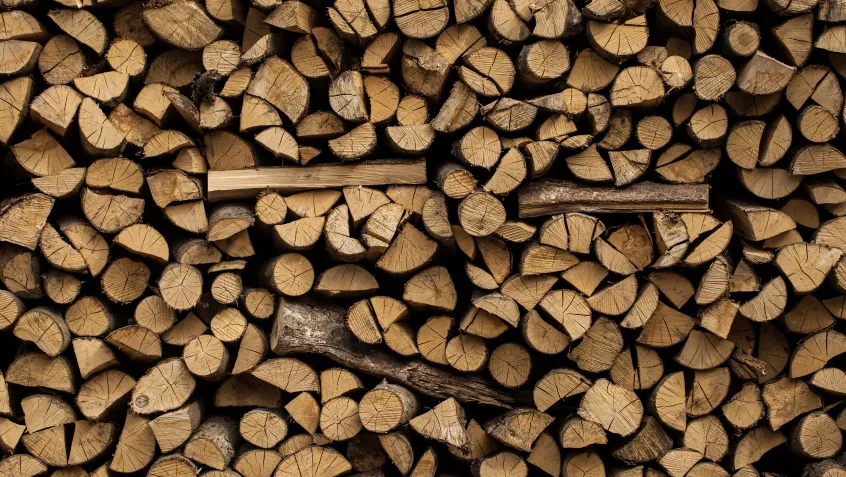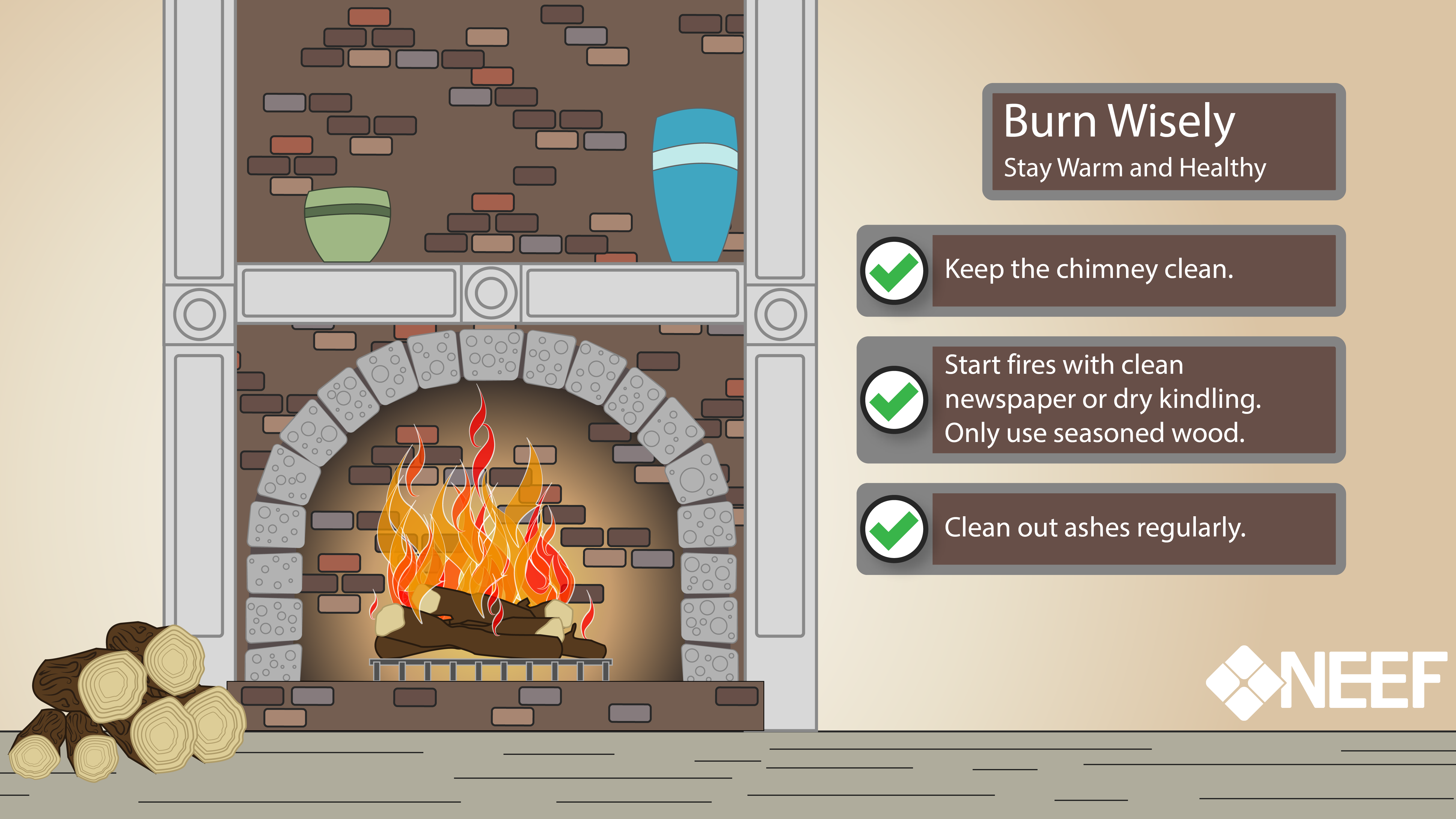
Brrr! When the temperature goes down outside, fireplaces and wood-burning stoves can take away the chill inside. Smoke from a crackling fire may smell good, but it can impact air quality in your home and your health. Smoke is a mixture of tiny particles and gases produced when wood burns—the fine particles can get into your eyes and lungs, where they may aggravate some health conditions like lung disease, bronchitis, and asthma.

Use these best burn practices from EPA at home to minimize wood smoke, stay warm, and protect your health:
- Before you burn, make sure your chimney is clean. A clean chimney provides a good draft and reduces the risk of a chimney fire. Have your chimney inspected by a professional at least once per year and regularly clean ashes from your fireplace or wood-burning stove to increase efficiency.
- Only use seasoned wood for burning. Seasoned wood looks darker, has cracks in the ends, and sounds hollow if smacked against another piece of wood.
- Use newspaper and dry kindling to start a fire. Never use gasoline, kerosene, charcoal starter, or propane.
- Build hot fires, which are safer and more efficient than smoldering fires.
- Never burn garbage or cardboard, coated or painted wood, particle board, plywood, or wood with glue on it. Burning these materials can release harmful chemicals into the air inside your home.
If you burn wood at home—even occasionally—install a smoke alarm and carbon monoxide detector to keep you and your family safe. If you already have detectors, check the batteries to make sure they are working properly.
Source:
- US EPA. 2016. "Burn Wise: Consumers â Best Burn Practices." Accessed January 31, 2017. http://www.epa.gov/burnwise/burn-wise-best-burn-practices


